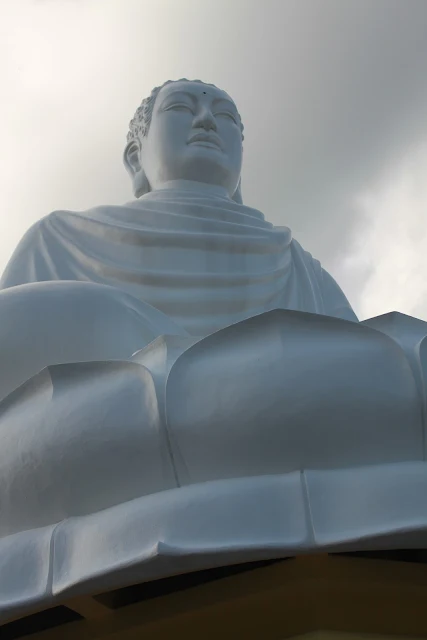Fresh from its success in Campsie, Albee's in south-west Sydney is packing them in at their new outlet in Cabramatta - at 2/44 Park Street. Again, the dining place is not that large, but the menu is varied. although perhaps not as extensive as that in Campsie. The Cabramatta outlet competes with food from Vietnam and other parts of south-east Asia, even if the target market is the same. On my recent visit with four of us in a group on a Sunday, what stood out was the yong tau foo in soup and the Hainan chicken rice. Yong tau foo is simply goodies like pork and fish mousse stuffed in deep fried tofu pockets with all swirling in a rich stock soup, replete with cut chilis and okra. My own favourites from Albee's remain the satay skewers, the South Indian mee rebus, the Fujian lobak rolls, nasi lemak, Marmite-flavoured pork ribs and the piping hot Kuching-styled but Cantonese-inspired clay pot noodles.
The tamarind-flavoured Thai-styled assam laksa (photo above) is an integral part and parcel of Penang Island street food. The version we had at Albee's I reckon must have been modified to suit Sarawak cooking styles on the island of Borneo. The white fat noodles used were larger than what we expected. The garnishing of cut pineapple, mint and Spanish onions were there as tradition requires. Somehow the taste of the stock soup was different, perhaps they had used another type of fish other than the preferred mullet. It did not have the rich intensity that can be found in the Penang and Thai versions. We also figured out about the choice of black shrimp paste (har ko) utilised that is quintessential to making the assam laksa that is craved by expectant mothers, immigrant adults and others who grew up with this niche dish. Galangal, shallots, ginger flower stalks, fermented shrimp paste (the belacan) and lemon grass are the key ingredients when making the required paste fresh.
Cabramatta remains an eating, commercial and shopping hub for Sydney, with a variety and liveliness that is fascinating fro any visitor. We spotted pandanus plants on sale in the mall; had durian milkshakes; and pased by several fabric shops. Fruits eyes included the mangosteens and mangoes grown in Australia.

































